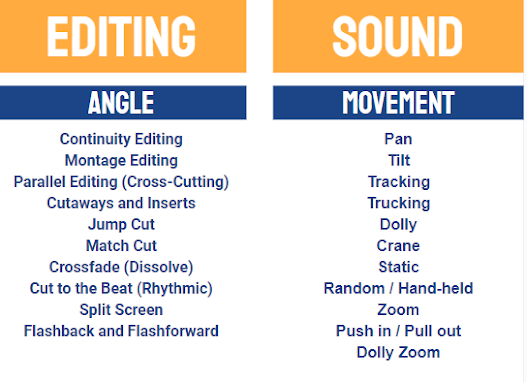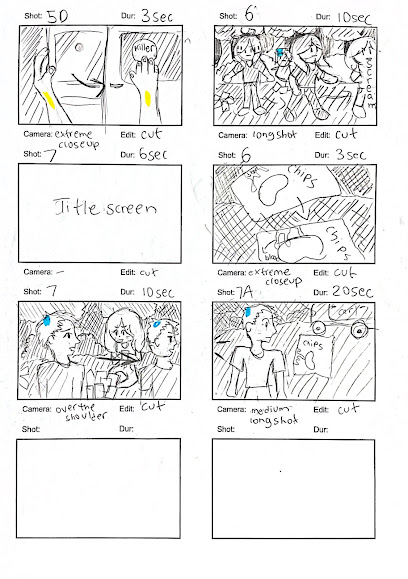This is the Classwork blog to show how we learned the technical elements, concepts, media terms and theories! This blog consists of some of my teachers presentations and the work we did in class.
This blogpost was made by me.
CAMERA
Fixed | Camera remains static | Calm, peace, normal |
Push in | Camera moves slowly toward subject | Brings the audience closer, more involved, getting more serious. |
Pull out | Camera moves slowly away from subject | Takes audience away from the action, leaving a character. Detaching from subject |
Pan | Side to side, camera fixed | Reveal information, mirrors natural head movement of the audience. |
Tilt | Up and down, camera fixed | Same as pan, just a different direction |
Dolly | Camera moves around freely | More immersive, we are moving inside the subjects world, we feel part of the action |
Tracking | Camera moves around on tracks | Similar to dolly, but smoother. |
Crane | Reveals the epic size of the setting, landscape. | |
Handheld | Camera is shakey | Very natural, immersive. High energy |
Zoom | Zoom | Brings audience closer to budget. Draws our attention to something. |
Description | Effect | |
Diegetic sound | Sound that can be heard by the characters within the media text. | Add a sense of realism. Reveal information to characters (and then audience) |
Non diegetic sound | Sound that can only be heard by the audience. | Enhance meaning, create an emotional response in the audience |
Trans diegetic sound | Sound that transitions from one to the other. | Creates a link between the audience and the world. More immersive |
Description | Effect | |
Melodic | Positive and pleasing connotations | Enhances a positive scene. Create positive emotions in the audience. |
Discordant | Harsh and unpleasant connotations. | Enhance negative scenes. Create suspense, tension, anxiety |
Contrapuntal | Has an opposite tone to the on-screen visuals. | Adds deeper meaning to scenes. Insight into the character's thoughts. Maybe they seek pleasure in doing bad things. |
Continuity Editing | Non continuity editing |
*Match cut |
*Match cut |
SOUND



























